begin quote from:
https://baynature.org/2014/01/09/species-woodpecker-can-find-golden-gate-park/
Which Species of Woodpecker Can You Find in Golden Gate Park?
by Alessandra Bergamin on January 09, 2014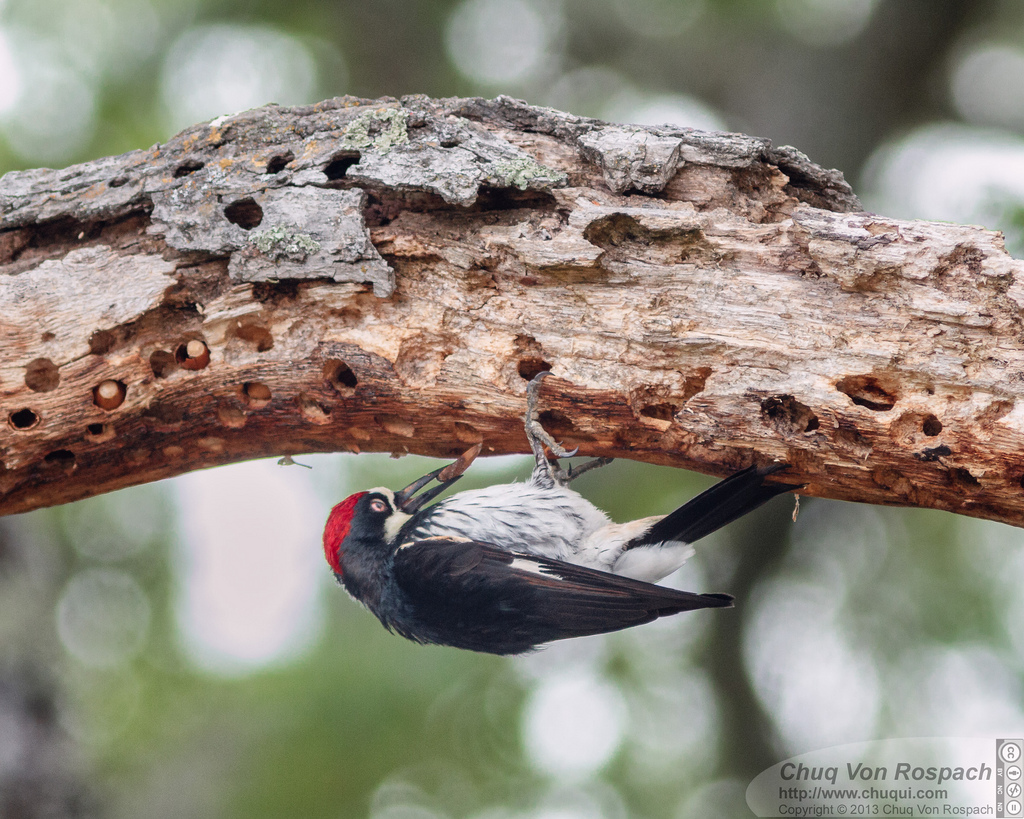
An acorn woodpecker working at its Granary. Acorn Woodpeckers harvest acorns and store them for lean times by drilling holes in the tree and stuffing the acorns in. This woodpecker is removing an acorn from its granary. Photo: Chuq Von Rospach.
Frank Aoyama sent in this week’s Ask the Naturalist about a bird you often hear before you see: “I hear woodpeckers in Golden Gate Park. What species live in the park?”
The downy woodpecker is the most common species in
the park, says naturalist David Lukas, and can be found year round. This
small, black and white checkered bird—males have a bold, red patch on
the back of their head—is an acrobatic forager and commonly found in
parks and by backyard feeders.
Over the past ten years, the hairy woodpecker has
begun breeding in the park and can be found year round. Although larger
than the downy woodpecker both species share the same coloring. The
hairy woodpecker however wields a longer bill than a downy and has a
more cleanly striped black-and-white head. Males also possess a patch of
red towards the back of their head.
Northern flickers are the most common and the easiest to see in winter at Golden Gate Park, said Alan Hopkins from the Golden Gate Audubon Society.
According to the Cornell Lab of Ornithology, northern flickers possess a
“gentle expression and handsome black-scalloped plumage.” The
undersides of the wing and tail feathers are red for those found in the
West and bright yellow for those in the East. While woodpeckers can
often be seen hoisted halfway up a tree, flickers prefer a diet of ants
and beetles, digging them out of the ground with their slightly curved
beak.
Nuttall’s woodpecker can be found year
round in Golden Gate Park but is the least common of three. A small,
black and white woodpecker, Nuttall’s is primarily found in California’s
oak woodlands.
The red-breasted sapsucker
is rarer and often harder to find in the park, says Lukas. Medium sized
with a red head and breast, sapsuckers drill small holes in the tree
bark (banksia trees are a favorite) to make the sap run. “Hippy Hill at
Sharon Meadows and the Botanical Gardens are good places to look,”
advises Hopkins.
The acorn woodpecker is an irruptive species that
experiences huge population spikes when food is widely available. During
such an irruption, their numbers will rise at the park before dropping
once again. They can normally be found in the non-breeding season. “When
they are in the park they are almost always found in the Oak Woodlands
near Conservatory Drive or near the AIDS Dell,” Hopkins said.“A good place to look for woodpeckers in the park is around the Chain of Lakes and the Bison Paddock,” added Alan Hopkins from the Golden Gate Audubon Society.
David Lukas is a freelance naturalist and author.
Alan Hopkins is a co-compiler of the San Francisco Christmas Bird Count for the Golden Gate Audubon Society.
A bird? A bug? Something strange in the natural world nearby? Ask us and we’ll find the answer!
Most recent in Ask the Naturalist
Crowded Muir Woods isn't the only place in the Bay Area to wander amongst old-growth redwoods.
Ask the Naturalist | Habitats: Land
Ask the Naturalist | Habitats: Land
How spiders create protein-rich liquid and turn it into silk.
Ask the Naturalist
Ask the Naturalist
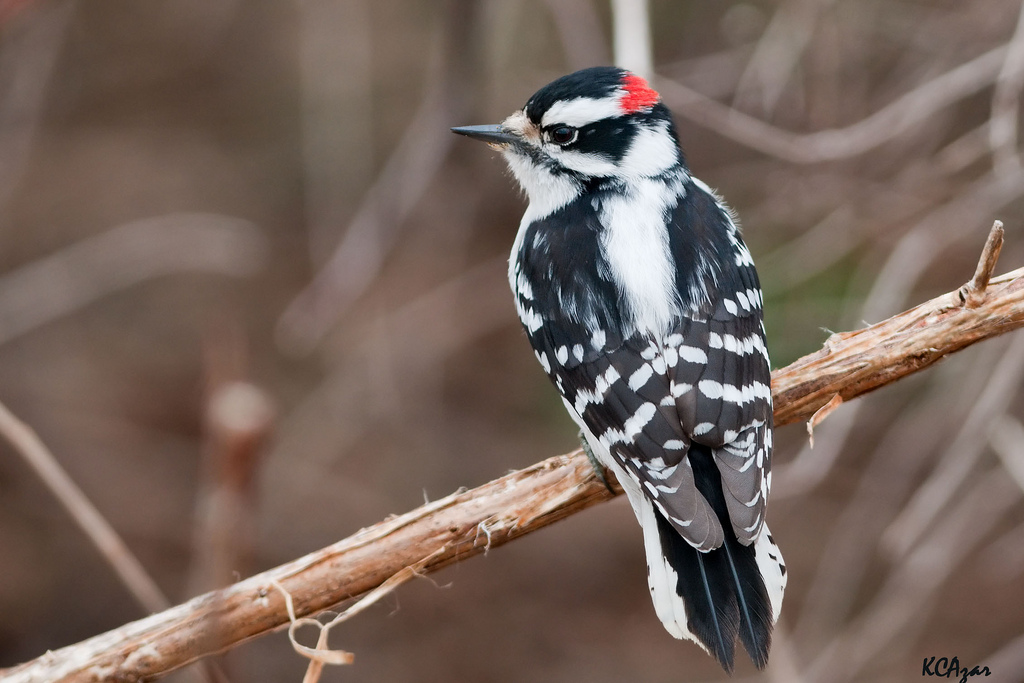

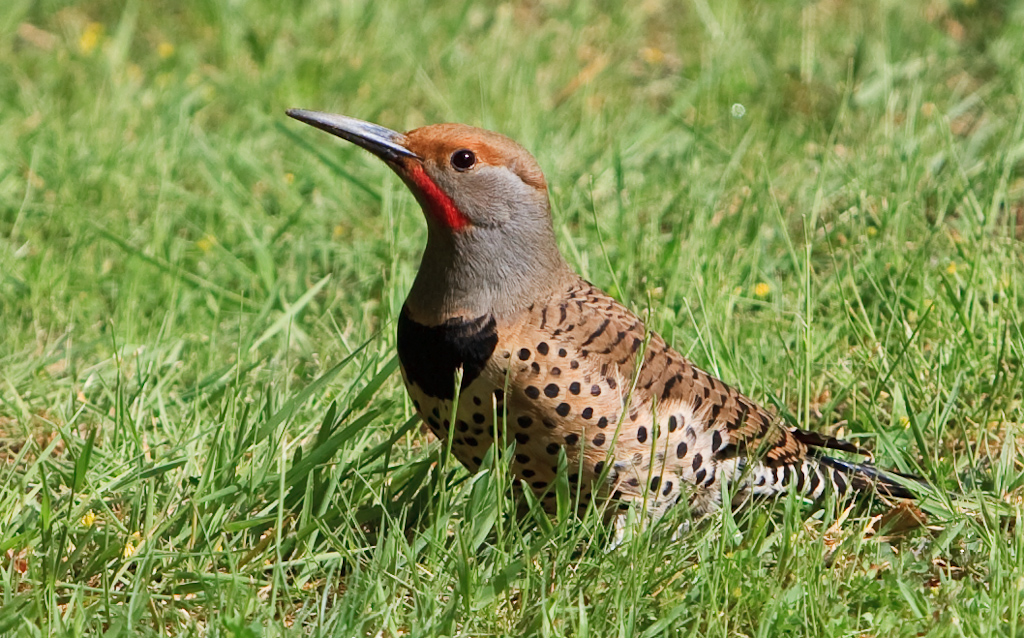
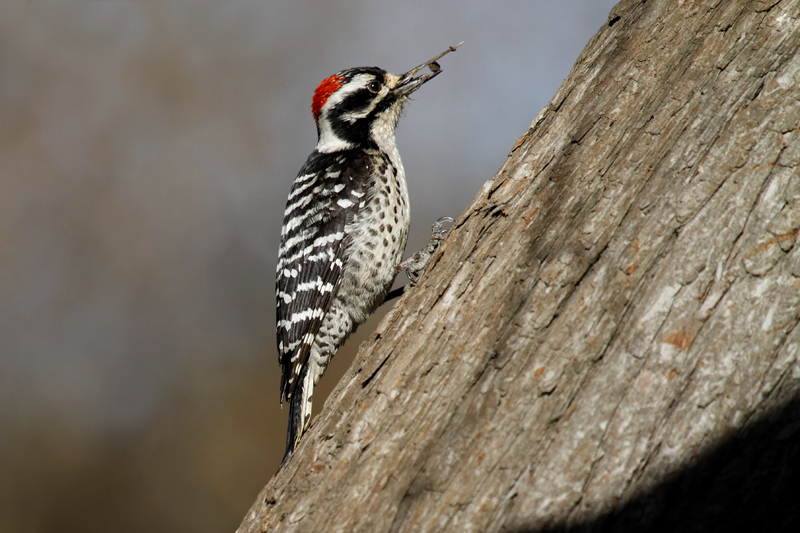
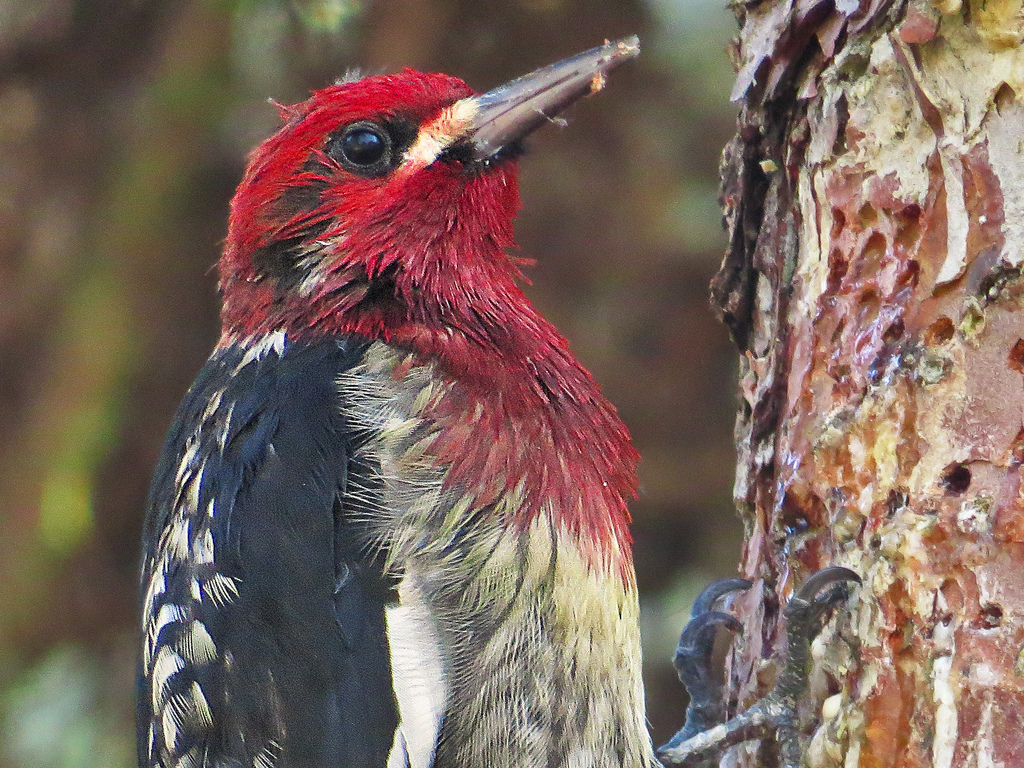
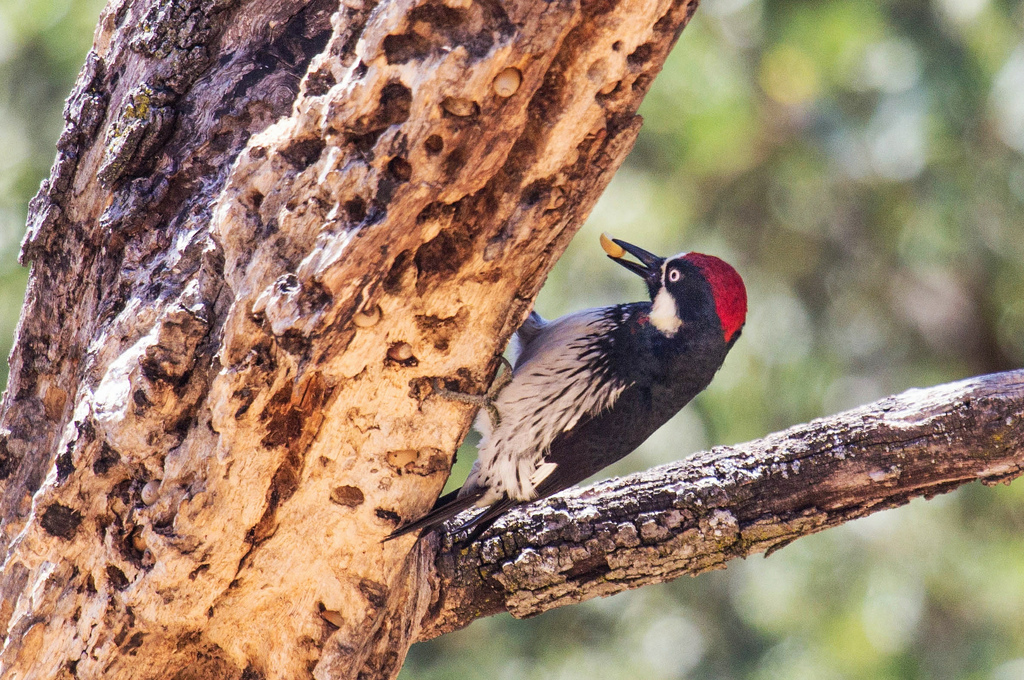



No comments:
Post a Comment